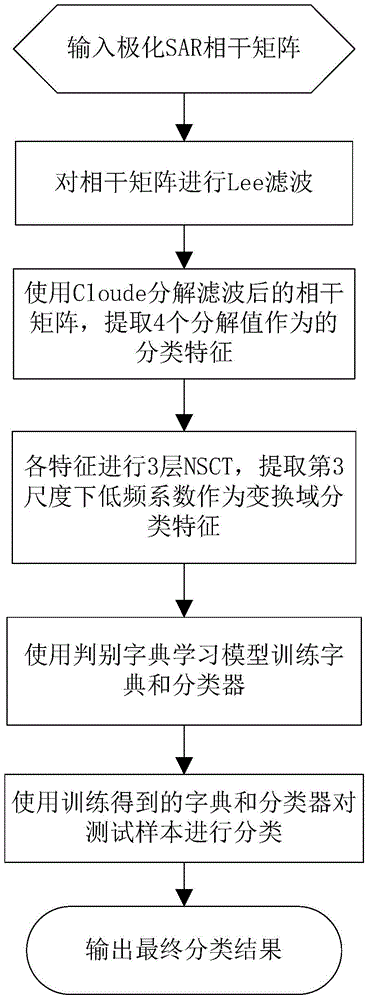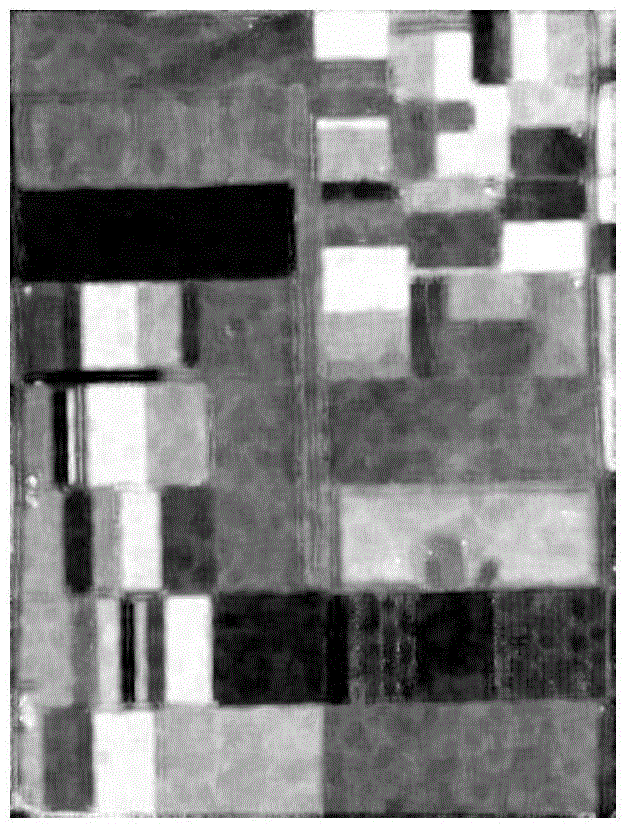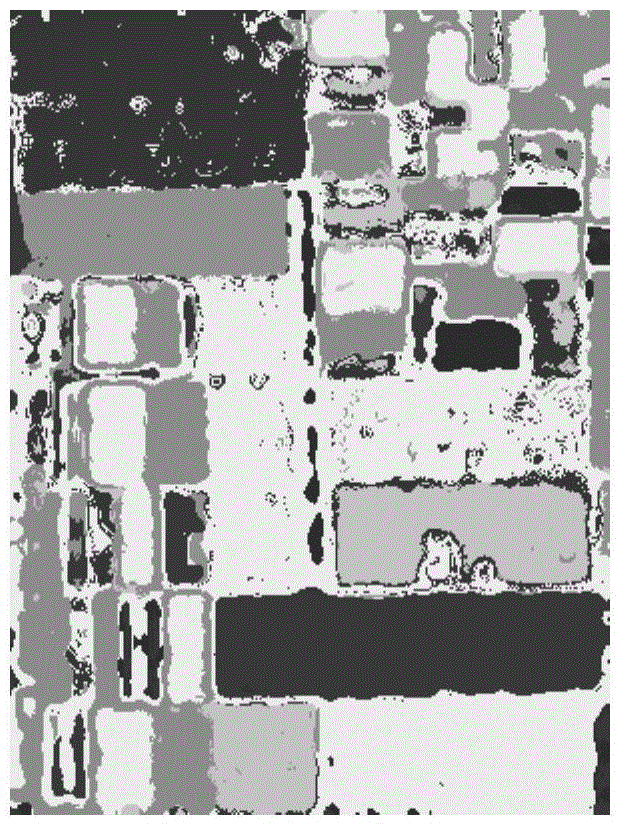Polarimetric SAR classification method on basis of NSCT and discriminative dictionary learning
A dictionary learning and dictionary technology, applied in the field of object recognition and image processing, can solve problems such as affecting data classification effect, affecting classification effect, and affecting classification speed, and achieves the effect of facilitating understanding, improving classification accuracy, and improving classification speed.
- Summary
- Abstract
- Description
- Claims
- Application Information
AI Technical Summary
Problems solved by technology
Method used
Image
Examples
Embodiment Construction
[0022] The technical solutions and effects of the present invention will be clearly and completely described below in conjunction with the accompanying drawings.
[0023] refer to figure 1 , the implementation steps of the present invention are as follows:
[0024] Step 1: Input the polarimetric SAR image to be classified, obtain the coherence matrix of each pixel, and perform Lee filtering on the coherence matrix to obtain the denoised coherence matrix.
[0025] Step 2, perform Cloude decomposition on the denoised coherence matrix to obtain 3 non-negative eigenvalues and 3 eigenvectors.
[0026] Decompose the denoised coherence matrix to obtain classification features. The decomposition methods include Freeman decomposition, Cloude decomposition, four-component decomposition, etc.;
[0027] The present invention uses Cloude decomposition to decompose each pixel of the polarimetric SAR image to obtain three non-negative eigenvalues λ 1 ,λ 2 ,λ 3 and 3 eigenvectors v ...
PUM
 Login to View More
Login to View More Abstract
Description
Claims
Application Information
 Login to View More
Login to View More - R&D
- Intellectual Property
- Life Sciences
- Materials
- Tech Scout
- Unparalleled Data Quality
- Higher Quality Content
- 60% Fewer Hallucinations
Browse by: Latest US Patents, China's latest patents, Technical Efficacy Thesaurus, Application Domain, Technology Topic, Popular Technical Reports.
© 2025 PatSnap. All rights reserved.Legal|Privacy policy|Modern Slavery Act Transparency Statement|Sitemap|About US| Contact US: help@patsnap.com



